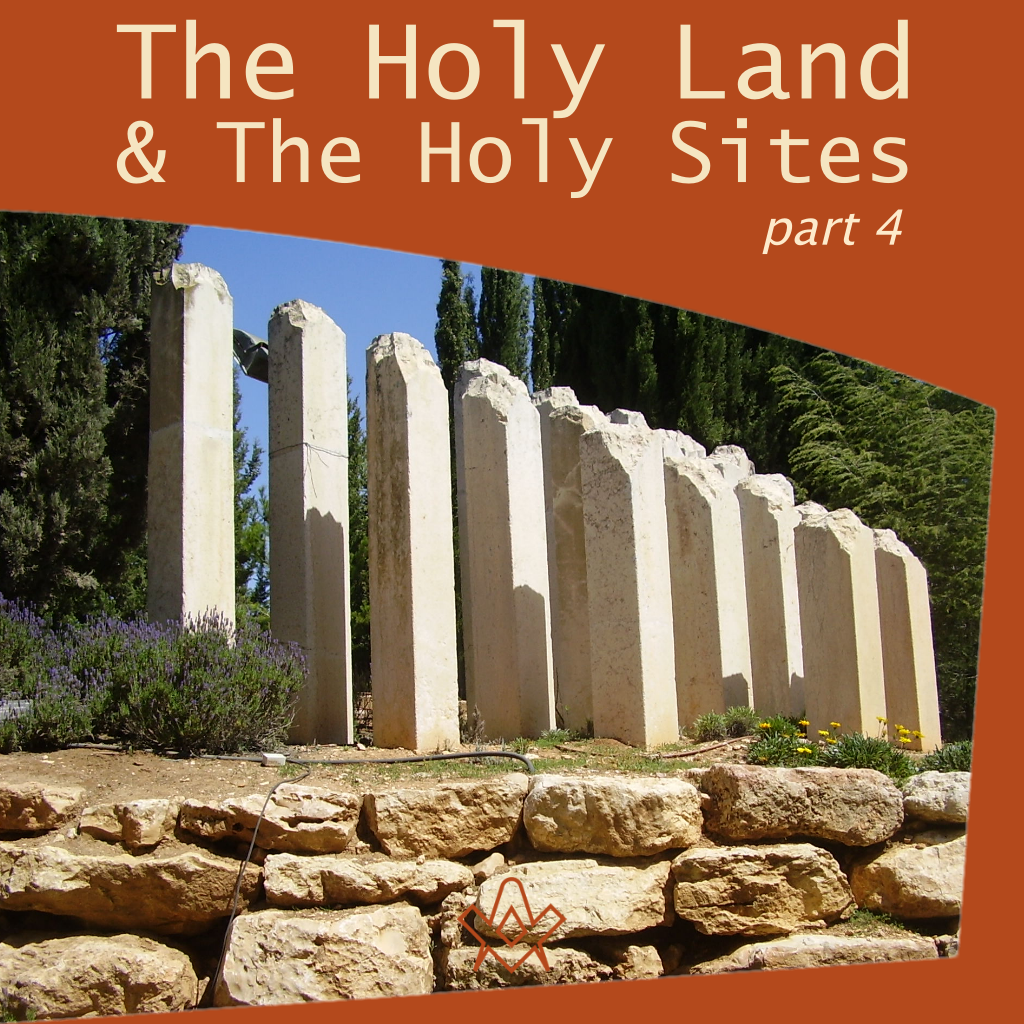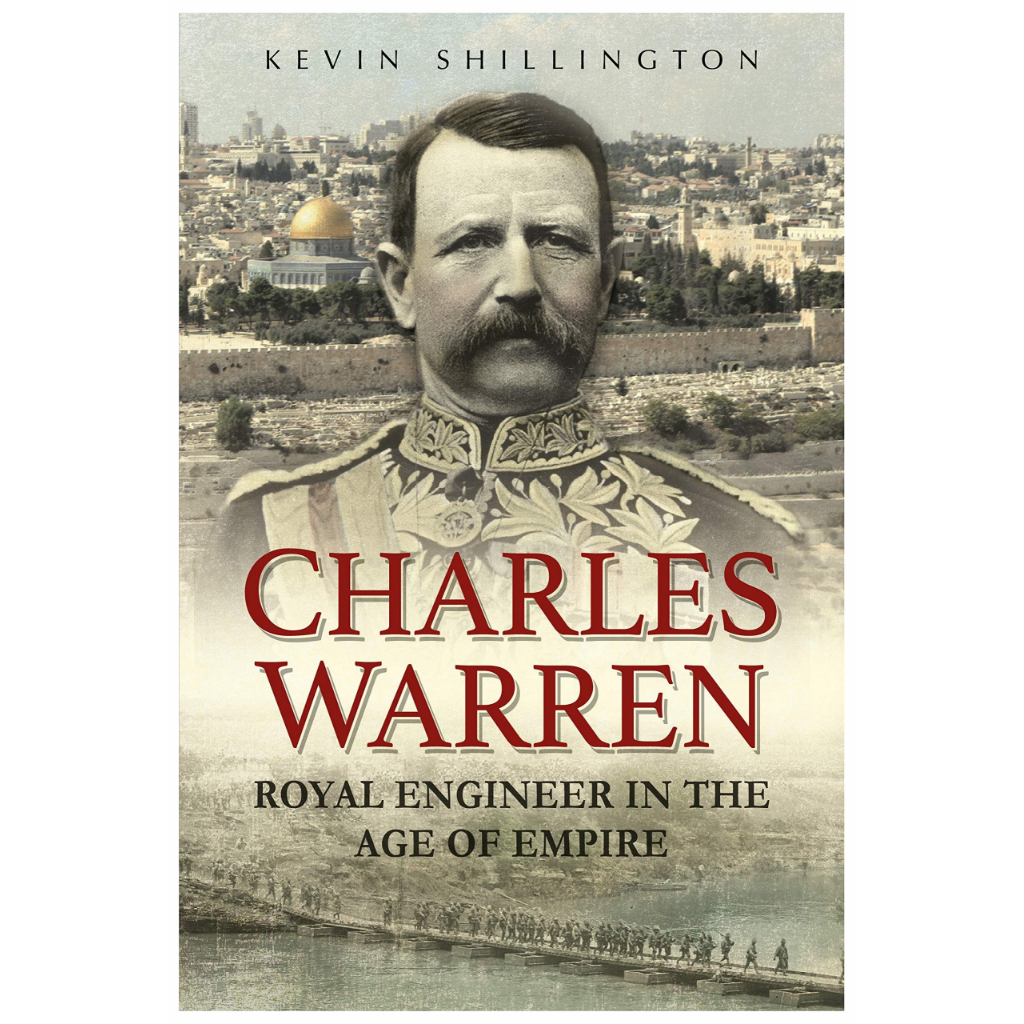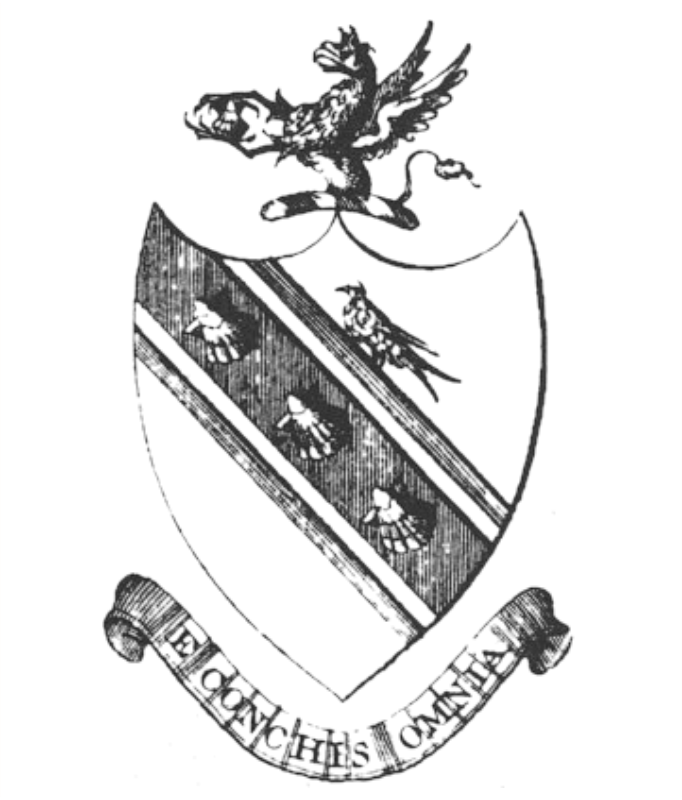This four-part series will consider ‘masonic’ aspiration and activity regarding the Holy Land and The Holy Sites; leitmotivs include:- pilgrimage, prophecy, tourism, exploration, colonialization and empire.
And, ‘to return freemasonry to the place of its nativity’
Part 1: Introduction and The High Degrees considered the possibility that the Christian higher degrees were a means by which the Church could assimilate and control freemasonries. It was noted that a masonic Order aspired ‘to acquire possession of the Holy Sepulchre at Jerusalem….’; just how that decision was made and the extent to which the Order might go to achieve the objective was considered. Contemporaneously, even Napoleon failed to acquire possession of the Holy Land!
Part 2: The American Grand Lodge and The American Grand Tourist considered the GL of Maine’s aspiration to, ‘…. ascertain whether any vestiges of ancient Masonry can be discovered in Palestine’. Also, there was a look at Bro. Mark Twain’s outrageous account of his visit to the Holy Land which he described as, ‘the record of a pleasure trip…. a record of a picnic’.
Part 3: The American Mason’s Tour and The English Imperial Exploration considered colourful Brother Rob Morris’ ‘business trip’ and plan to establish American Freemasonry in the Holy Land. Also, how Freemasonry supported imperial British, Holy Land, aspiration.
Part 4: The Masonic Military Explorer and The Masonic Pathetic Tourist.
Each part will seek to identify ‘masonic’ Holy Land interest, aspiration and activity with leitmotifs:- pilgrimage, prophecy, tourism, exploration, colonialization and empire. And, aspirations to ‘return freemasonry to the place of its nativity’.
The American Mason’s Tour and The English Imperial Exploration.
Kevin Shillington’s book, “Charles Warren in the Age of Empire” was reviewed in The Square, November 2020 and the author interviewed a month later. This article is thereby assisted.
It is perhaps unlikely that an ‘establishment’ invests in exploration simply for the sake of exploration.
W.Bro. Capt. Charles Warren R.E. was appointed to lead the Palestine Exploration Fund’s (PEF) 1868-71 exploration of Jerusalem.

Aerial view of the Temple Mount Image: Andrew Shiva
IMAGE LINKED: wikimedia Attribution 4.0 International (CC BY 4.0)
Sir George Grove, the PEF’s organising driving force, instructed Warren ‘to make discoveries in Jerusalem, more particularly in that portion of it known as the Haram Area [Temple Mount] which contained the site of the Temple’.

Sir George Grove pictured in The Musical Times Vol 38, No 656 (October 1897)
IMAGE LINKED: wikimedia Attribution 4.0 International (CC BY 4.0)
In ‘the Haram area’, Mark Twain referred to alleged vestiges of King Solomon’s Temple (KST)as, ‘fraud and humbug’: for Rob Morris, ‘…. the Temple of Solomon is absolutely gone’.
Given the, then, level of knowledge, perhaps both observations were, and remain, ‘greatly exaggerated’.
Grove was not a Freemason: why was KST his priority? Is proof of vestiges of KST fundamental for the credibility and future plans of the three Abrahamic revealed religions?
For some Freemasonries, was/is ‘scientific’ support for religious belief superseding the role of Masonic allegory?
The March 1868 UGLE Quarterly Communication records the proposition, case for and approval of a donation of one hundred guineas (£14,500 today) to the PEF. The reasoning included:-
- That the PEF was for, ‘…. the scientific investigation of the Holy Land in connection with biblical history’.
- ‘The fuller elucidation and illustration of the Holy Volume and events which had happened in the Holy Land, would be entitled to the esteem and support of Masons’.
- ‘To show the light thrown on that Holy Volume which all Masons alike respect and venerate.’
- ‘There was nothing that Masons were more proud of than to trace their origin back to those who under the direction of King Solomon, raised the Temple of Jerusalem’.
- ‘Lord Derby, Lord Russell, Sir R. Murchison, and amongst them might be named the M.W. Grand Master himself, who had liberally subscribed in support of the work.’ (Also, the Prince of Wales who had visited Jerusalem in 1862 and became Grand Master in 1874.)
- ‘Superintending on the spot is W.Bro. Charles Warren who had conciliated the goodwill of people out there and had overcome the religious prejudices among the Inhabitants which for centuries, had prevented strangers from setting foot on those places.’
It would seem that for the Grand Lodge of England, as for the G.L. of Maine forty years earlier, there was no significant difference between vestiges of Judaeo-Christianity and those of Freemasonry.
Perhaps acquiring possession of Holy Sites was part of British Imperial foreign policy; Freemasonry universal may have facilitated ‘setting foot on those places’. (See Part 3.)
Warren was conscientious, religious, fastidious, athletic, adventurous and studious; a soldier of the Empire and military surveyor.
In 1859, aged 20, he was initiated into L.278, Gibraltar; Freemasonry pulled together aspects of his significant human capital.
A lecture given in a Gibraltar lodge supported the view that Freemasonry began with the building of KST and referenced its ‘still visible foundations’.
After succeeding Wilson, this may have been in Warren’s mind when building upon his work, including maintaining satisfactory working relations with the Jerusalem authorities; even though, characteristically, challenging the boundaries!
However, it must be concluded that Warren did not find consensually accepted vestiges of KST.
Unsurprisingly, as the founding WM of Quatuor Coronati in 1886 and now Sir Charles Warren, his paper was titled, ‘On the Orientation of Temples’.
He wrote;
We have the two views:
(a) The theory which supposes man to have gradually developed thoughts and inspirations, and after a series of years to have arrived at a conception of a Deity. [Charles Darwin, The Origin of Species.]
(b) The theory which supposes man to have been created in the image of God and to have fallen away.
With the first Masonry has no part or existence, as it is founded on the volume of the sacred law.’
– Ars Quatuor Coronatorum Vol 1.
For Warren it was not possible to serve Freemasonry and Darwin!
Yet, Darwin’s grandfather, Brother Erasmus Darwin was a pioneer of evolutionary theory.
His coat of arms bears three scallop shells and the words Everything out of shells. (tr.) A visit to Erasmus Darwin House, Litchfield, is a must for anyone interested in early Freemasonry and Enlightenment science; this is summarised in his, The Temple of Nature or The Origin of Society: A Poem with Philosophical Notes.
It is also clear that Warren wished to disassociate Judaeo-Christianity and Freemasonry from sun-worship, yet wrote.
Masonry is after all neither more nor less than the ancient religion of the world — with the Hebrews there was the true Masonry — with the heathen the degenerate Masonry — carried on side by side….
If we cannot trace our descent from the Phoenician craftsmen who worked on the Temple of Solomon, and if it be only an allegory, then our position descends from the sublime to the ridiculous.
[Author’s Note: The text of Part 4 was submitted to the Editor of The Square before the current, tragic, re-occurrence of conflict in the Middle East.
In Part 1, attention was drawn to Jerusalem being, ‘the most sought after and fought after city on earth’. Also, it was suggested, ‘Each of the three principal revealed religions have prophetic tradition based on Jerusalem and its Temple. Various prophets and their interpreters have varying views on a programme for ‘the last times’.’
Since submitting Part 4, these words are contemporarily, poignantly relevant.
This next section commences with a brief paragraph accounting for a 2019 visit to the Holy Land. It is written in the, hopefully, unmistakable style of Mark Twain (see Part 2) whom I dubbed, the American Voltaire’; both Voltaire and Twain wrote of human failure in a highly irreverent style, it was a way of containing, yet communicating, grief and anger.
I wish to leave unaltered the Voltaire/Twain style opening of, ‘….and The Masonic Pathetic Pilgrim’. Readers of The Square will easily read between the lines. As written, the section soon moves on to world poignancy. (GR) ]
Speaking of which….
….and the Masonic Pathetic Pilgrim
And so, it was joyfully anticipating first-footing the Holy Land, 13th November 2019.
At 05:45, whilst approaching the port of Ashdod, the trusty vessel (aka cruise liner) came under un-Masonic rocket attack.
The fearless, on top deck, were returning fire with their trusty smartphones; for the disinterested, breakfast was taken early; the apprehensive, entrenched under tables and armed with trusty cases of Champagne.
It was full steam ahead in tactical retreat, arriving a day early at Haifa.
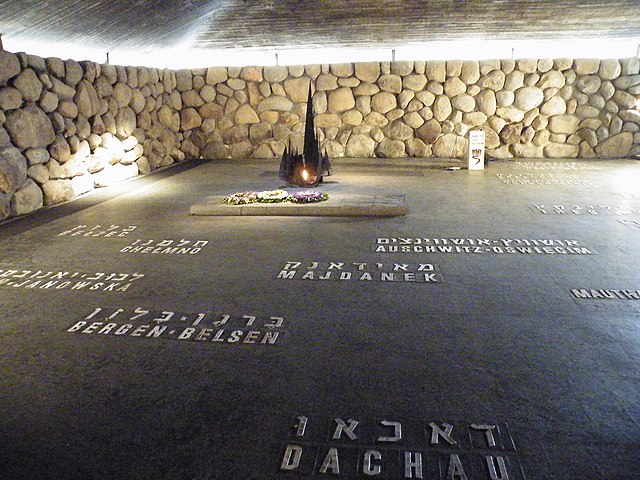
The names of the concentration and death camps, given in Hebrew and English, all arrayed around the Eternal Flame.
By Mrbrefast – Own work)
IMAGE LINKED: wikimedia Attribution 4.0 International (CC BY 4.0)
For one pilgrim, a priority was a visit to Jerusalem’s World Holocaust Remembrance Centre [Yad Vashem] and its Children’s Memorial; perhaps an epicentre of world poignancy, a light for each of the 1.5 million children lost.
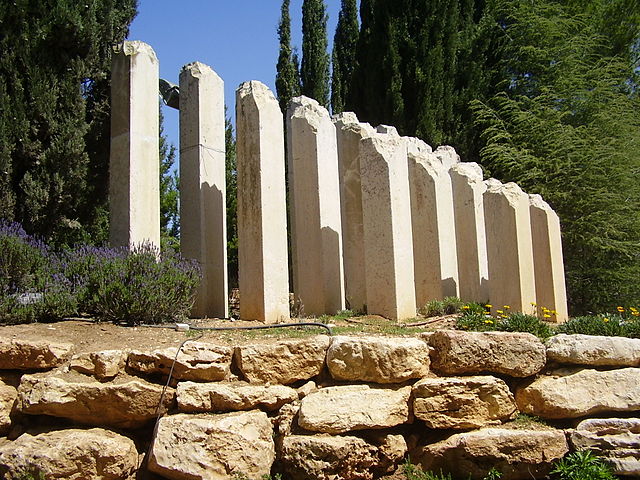
The Children’s Memorial at Yad Vashem – By צילום:ד”ר אבישי טייכר,
IMAGE LINKED: wikimedia Attribution 4.0 International (CC BY 4.0)
Another priority was to meet in Haifa for a day with W.Bro. Dan Doron (former contributor to The Square) with whom there had been twenty years’ communication on the Masonic Light e-group.
And so to Jerusalem, in the footsteps of Twain, Morris, Wilson and Warren.
Whilst journeying to the ‘Old City’, the pilgrims were beset with disasters which would have challenged those feet walking Jerusalem in ancient times; traffic jams, pilgrims late back to the coach and temporary loss of the Guide’s bag!
Unfortunately, as not on the itinerary, the pilgrims’ coach ‘passed-by on the other side’ of the entrance to Solomon’s Quarries (Zedekiah’s Cave).
Rob Morris, Capt. Warren et alia did not have that problem. Morris wrote,
One of the most agreeable episodes in my visit here was an assemblage of Freemasons in the vast quarries that underlie the north-eastern quarter of the city of Jerusalem, and the opening of a Moot [informal] Lodge there: this event occurred on the afternoon of Wednesday, May 13. [1868]
Zedekiah’s Cave also known as Solomon’s Quarries is a limestone quarry under part of the Old Town of Jerusalem, Israel. – By Chmee2 – Own work,
IMAGE LINKED: wikimedia Attribution 4.0 International (CC BY 4.0)
At this meeting, Morris claims to have conferred the Order of the Secret Monitor on all present, Warren did not record anything of this in his copious journal. (Or join the Secret Monitor when formed in England in 1887 – perhaps preoccupied with his, not happy lot.)
On May 7, 1873, as warranted by the G.L. of Canada, ‘the vast quarries’ hosted the consecration of Royal Solomon Mother Lodge No. 293, ‘to work in Jerusalem and surroundings’.
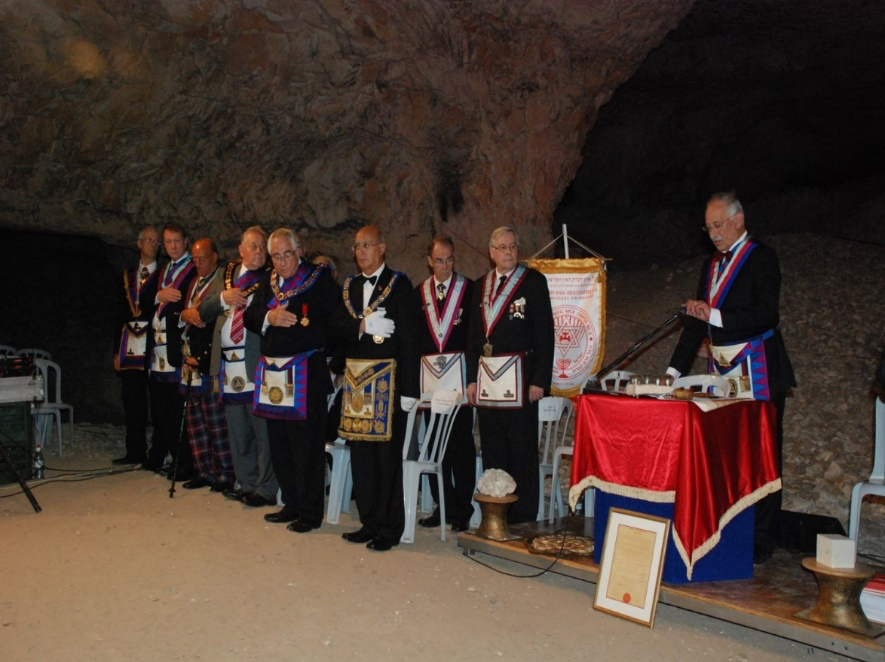
W.Bro. Dan Doron GDC presiding over a meeting in Solomon’s Quarries under Old Jerusalem; at least one Masonic meeting is held there each year.
The question posed in Part 3 is perhaps the question: who levelled the summit of Mount Moriah?
The Temple Mount / Haram is an area of 36 acres, 740M above sea-level: what might have been Moriah’s pre-Abrahamic height?
Why was the fortified predecessor of the City of David built significantly below the summit?
- Perhaps it was high enough for strategic purposes;
- the available water supply; and,
- perhaps there was not, there and then, the civil engineering capability to construct higher. When might this capability have arrived: with Herod I, the Romans, or later?
Envoi: There are many issues arising from a consideration of Masonic interest in the Holy Land in general, and in KST in particular, including:
- Is there a difference between vestiges of ancient Freemasonry and those of ancient Judaeo-Christianity?
- Is it necessary for those Freemasonries requiring belief in a Supreme Being (faith-based) to believe, by faith, that KST was actually built on the Temple Mount?
- If so, should ‘scientific’ proof be necessary or sought?
- Could faith-based freemasonries accept KST solely as allegory.
- Some faith-based Freemasonries are on record as identifying Masonic work as ‘God’s work’. Is there any worthy Masonic activity which can be understood as exclusively humanistic in origin, purpose and outcome?
- Do faith-based Freemasonries regard those which are not as being Freemasonries at all?
- Are there any conceivable circumstances which could lead to faith-based Freemasonries recognising humanistic Freemasonries?
The same person cannot play both football and baseball at the same time – their rules are different; it must be one or the other. (See Part 3)
Religious Knowledge = VSL x logic.
Scientific Knowledge = empirical data x mathematical models. (Hariri)
Is the attempt to confirm religious knowledge with scientific knowledge intellectually honest? DepGM and President of the Royal Society, Martin Folkes, honestly pursued scientific knowledge (better, scientific methodology) and maintained that Freemasonry should be understood as allegory and symbolism.
Some Freemasonries define themselves as peculiar systems of morality, veiled in allegory and illustrated by symbols; this could very well define many religions.
What is honest is the ‘temple not built with hands’.
Which things are an allegory: for these are the two covenants; the one from the mount Sinai, which gendereth to bondage, which is Agar.
For this Agar is mount Sinai in Arabia, and answereth to Jerusalem which now is, and is in bondage with her children.
But Jerusalem which is above is free, which is the mother of us all.
Within some Freemasonries, Erasmus Darwin’s Temple of Nature Or The Origin Of Society applies to allegorically ‘building the temple’ which alludes to the improvement/advancement of Masons.
Not for the purposes of Masons themselves, far from it; rather, for the purpose of building back better, human society universal.
Masonic work is for the cause of humanity – which ‘answereth’ to the ‘free’ in Freemasonries.
Article by: Gerald Reilly

Gerald Reilly was initiated in 1995 into St Osyth's Priory Lodge 2063. Essex. England (UGLE).
He was a founder member of Josh Heller's Allthingsmasonic, and with Josh co-wrote 'The Temple that Never Sleeps' (Cornerstone Books, 2006) he is committed to the development of e-Freemasonry.
Awarded the Norman B Spencer Prize, 2016.

CHARLES WARREN : Royal Engineer in the Age of Empire
By: Kevin Shillington
The life of Charles Warren Royal Engineer is a compelling story, full of action, conflict, triumph and disaster, with reputations gained and lost.
All set against the background of an expanding British Empire. It is a tale of secrecy, Freemasonry and pioneering archaeology as the young Lt Warren, still only in his twenties, tunnelled under the Holy City of Jerusalem in search of evidence of the Temple of Solomon and Herod the Great.
A man of high principle and dogged determination Warren thrived on a challenge: searching for lost British spies in the desert of the Exodus, or publically calling out the rapacious colonialism of Cecil Rhodes.
Later, in different circumstances, he ordered the arrest of Winston Churchill. Although thrice knighted for his many achievements, Warren is most widely remembered as the controversial Metropolitan Police Commissioner who failed to catch Jack the Ripper .
In the end he faced the supreme challenge in the Anglo-Boer War, becoming the scapegoat for one of Britain’s greatest military disasters, the Battle of Spion Kop.
In this new biography, the first for 80 years, historian and biographer Kevin Shillington delves into the records and presents a reassessment of Warren s reputation.
Book: by Gerald Reilly

The Temple That Never Sleeps
by Josh Heller and Gerald Reilly
Freemasons and E-Masonry Toward a New Paradigm
A revolutionary book for every Freemason.The two authors, American and UK Masons, present a radical view of Freemasonry for both today and tomorrow.
In addition to their ideas are those of numerous Internet Masons (E-Masons) from around the world who, by sharing the experience of their own Masonic journey, have provided stunning personal insight into the viability of the Craft in the Internet Age.
This book will challenge your understanding of Freemasonry today and how it might transform for future generations.
Recent Articles: by Gerald Reilly
 How can the allegory of the Tower of Babel teach us tolerance? Language can be a divide. Not confusion among languages but rather within language, a seriously unclear understanding of another’s world-view. We assume it is so different from our own and yet with clarity, a realisation there is more which unites than separates. |
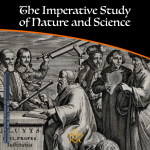 The Imperative Study of Nature and Science At some stage during Freemasonry's Second Degree, the candidate is advised that there is now permitted, something like, the extension of their research into the hidden mysteries of nature and science. Such is an excellent permission and one that each and every Freemason should pursue with awe and passion. |
 Pure Ancient Masonry; P4. A Companion in Rule, Building a better world P4. A Companion in Rule, Building a better world - The four parts of Pure Antient Masonry comprise the ‘body’ Masonic; they are the building blocks of the vital relevance, through enhanced citizenship, wherein the soul of Freemasonry abides. |
 Pure Ancient Masonry; P3. The Master, Building Better Character Part 3: The Master, Building Better Character - Being raised is a transition from knowledge to wisdom. |
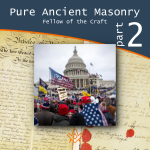 Pure Ancient Masonry; P2. A Fellow of the Craft Part 2: A Fellow of the Craft, Building Better Knowledge. Pure Antient Masonry consists of four parts. ‘Building the Temple’ is the fundamental Masonic allegory for building better people; this must be understood as a seamless whole: |
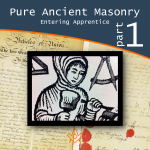 Pure Ancient Masonry; P1. An Entering Apprentice Part 1. An entering apprentice: Building Better Communities; Pure Antient Masonry consists of four parts. ‘Building the Temple’ is the fundamental Masonic allegory for building better people to build a better world |
 Pure Ancient Masonry; Intrduction This series will consider the defining characteristics, lessons and benefits of Three Degrees, the Order of the Royal Arch and when conjoined, Pure Ancient Masonry. |
 The Christianising of British Freemasonries - P4 This concluding article in the series considers the separation of British freemasonries from the Grand Orient of France (GOdF) and maintaining fraternity with the Prussian Grand Lodge of the Three Globes. |
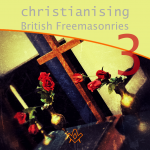 The Christianising of British Freemasonries - P3 Discover the battle for the 'soul' of Masonry. Part 3. French Perdition: ‘…for what fellowship hath righteousness with unrighteousness’? |
 The Royal Arch – ‘the fourth step in regular Freemasonry’ United Grand Lodge of England, has now designated the Royal Arch, the fourth step in regular Freemasonry, it therefore must be concluded that…publications…should now be revised, and based on attracting to the benefits of the four steps. |
 The Christianising of British Freemasonries - P2 How might the battle for the souls of Freemasonries be identified in a way that ensures thriving in the 21st Century? There is no guarantee of the immortality of the soul of Freemasonry! ‘We study the past in order to free ourselves from it.’ (Hariri) |
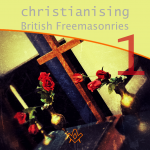 The Christianising of British Freemasonries - P1 This four-part series considers: 1. the separation of British Freemasonries from the Grand Orient of France (GOdF); and, 2. maintaining fraternity with the Prussian Grand Lodge of the Three Globes. |
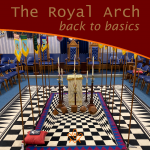 The Royal Arch - Back to Basics In the Royal Arch ceremony, the sojourners are buried with their tools in a vault. The sun, at its highest, provides enlightenment and the principal sojourner is returned to the former companions of his toil |
 The Holy Land and the Holy Sites P4 Fourth instalment of the four-part series, considers ‘masonic’ aspiration and activity regarding the Holy Land and The Holy Sites |
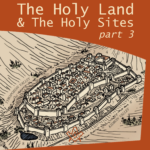 The Holy Land and The Holy Sites P3 Third instalment of the four-part series, considers ‘masonic’ aspiration and activity regarding the Holy Land and The Holy Sites |
 The Holy Land and The Holy Sites P2 The four-part series will consider ‘masonic’ aspiration and activity regarding the Holy Land and The Holy Sites |
 The Holy Land and The Holy Sites P1 In this four-part series, we will consider ‘masonic’ aspiration and activity regarding the Holy Land and The Holy Sites |
 Science and Citizenship: Towards a 21st Century Masonic Mindset. |
 Towards a 21st Century Masonic Mindset: Part 3 ‘Freemasonries’ and the Fourth Industrial Revolution |
 Towards a 21st Century Masonic Mindset: Part 2: ‘Freemasonries’ and Religiosity. |
 Towards a 21st Century Masonic Mindset: Part 1: ‘Freemasonries’ and Governance. |
masonic knowledge
to be a better citizen of the world
share the square with two brothers

click image to open email app on mobile device


